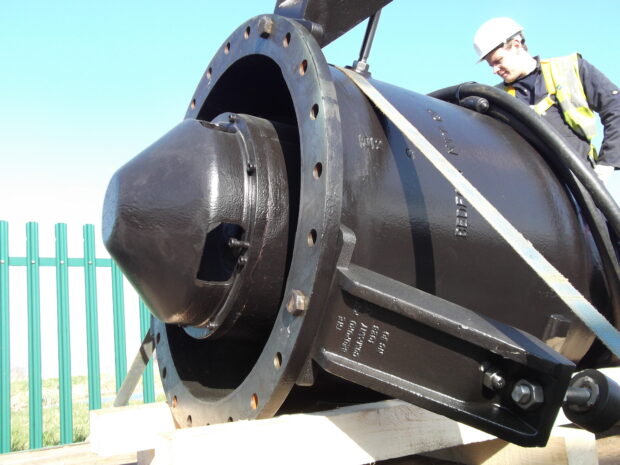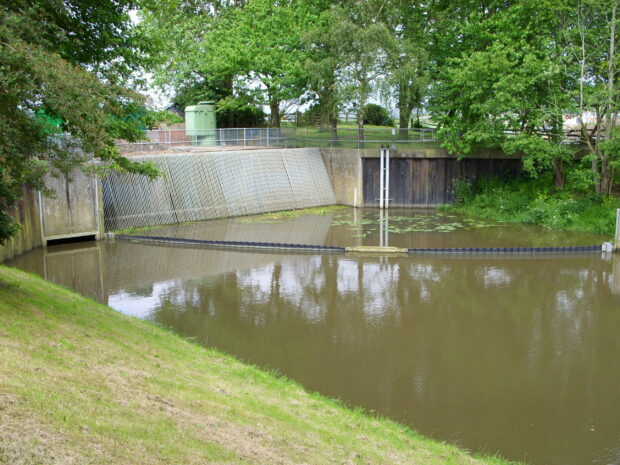
With 6 per cent of the Environment Agency’s carbon emissions coming from the pumps we use to reduce flooding and drought, Steve Carman, Chartered Electrical Engineer, explains how his work in the South-East is helping to reduce this.
There are c. 360 pumping stations across our country that swing into action when we are hit by droughts or flooding. These are vital assets that keep our country prospering when the chips are down. In drought, they move water from the ground or rivers to supplement water supplies elsewhere so that water users like farmers and water companies can continue functioning whilst minimising environmental impact and protecting habitats. And to reduce the impacts of flooding, we have pumps that divert floodwaters to protect people and properties, and even help natural flood management.
All this pumping accounts for c. 54 gigawatt hours of the Environment Agency’s electricity consumption. That’s equivalent to around 18,000 average UK households. With all our minds focused on energy prices these days, that’s quite a bill!
I have been working as an Electrical Engineer for the Environment Agency since 2003, first starting out as a field technician after completing my commercial electrician’s apprenticeship and then gaining an HND, and Degree, in engineering. My degree focused on utilisation of electrical energy and electrical power which has helped me, and my team in the South-East, focus more on pumping system efficiencies.
Way before today’s energy crisis, my job has been to look at the pumps and other assets we have and make them as energy and carbon efficient as they can be. Back in 2013 for instance, I worked on the Hacklinge pumping station in Deal, near Sandwich in Kent. It was one of the biggest users of electrical energy of any pumping station in the South-East, with two primary 90kW submersible pumps. I led a team to replace the old pumps with more efficient ones. Running two pumps in parallel rather than one pump at a time at full speed reduced power consumption whilst still maintaining the stations full pumping capacity. As a result, at Hacklinge, we saved up to 65 tonnes CO2/yr and up to £10k a year. The changes also meant the whole system will last longer, and a huge reduction in the number of hours we spend servicing and maintaining the asset.

Now that most of our pumps are running as efficiently as possible, we are looking to replace ageing pumping stations with more passive design solutions. This reduces our carbon footprint further. Where it is feasible, we are starting to make more use of gravity bypasses to drain potential flood water. One example is Beddingham pumping station near Lewes in East Sussex. When the tide is out, the gravity bypass control system opens the gate and drains excess water using gravity through a culvert, rather than pumping. Whilst the gravity bypass is working this saves the equivalent of c. 40 tonnes of CO2 per year rather than pumping. Other examples of gravity bypasses at pumping stations include Willop near Folkestone, and Lake Four near Thamesmead.

I am also involved in an innovative trial with my colleague mechanical engineer Yahya Ugradar, using intelligent sensors to remote monitor our pumping stations so that we can improve our maintenance regime, reducing the amount of time, and carbon we spend visiting sites. We are using smart data algorithms and artificial intelligence to make better informed decisions on when we need to physically intervene to optimise performance, for example carrying out a service of a pump motor to keep it running smoothly. We are already seeing a lot of immediate benefits and we’re excited to see how these pan out over the next few years.
So, as you can see there is more to pumping than meets the eye. It is often a vital part of what we do but we are working hard to reduce its impact on climate change as much as we can.
Find out more about the Environment Agency’s plan to reach net zero at: Environment Agency: reaching net zero by 2030

2 comments
Comment by John Barlow posted on
Excellent work!
Comment by Judy Bowen Jones posted on
Is it possible to generate electricity in the water flowing in the pipes you are pumping through?